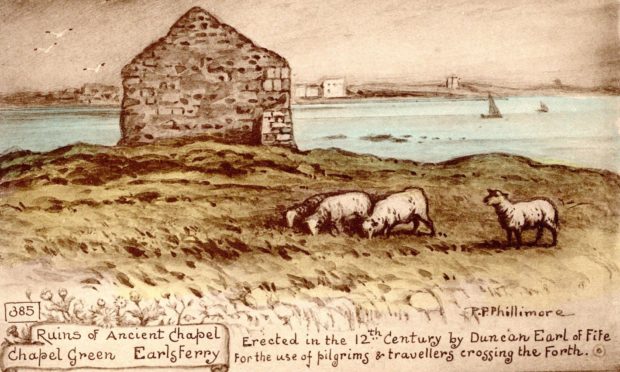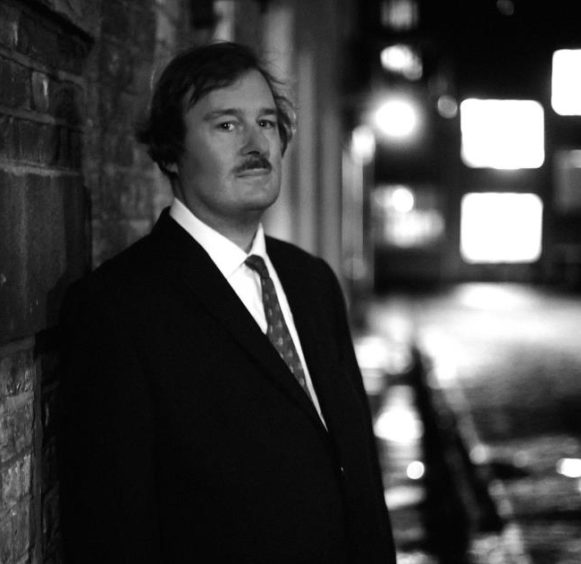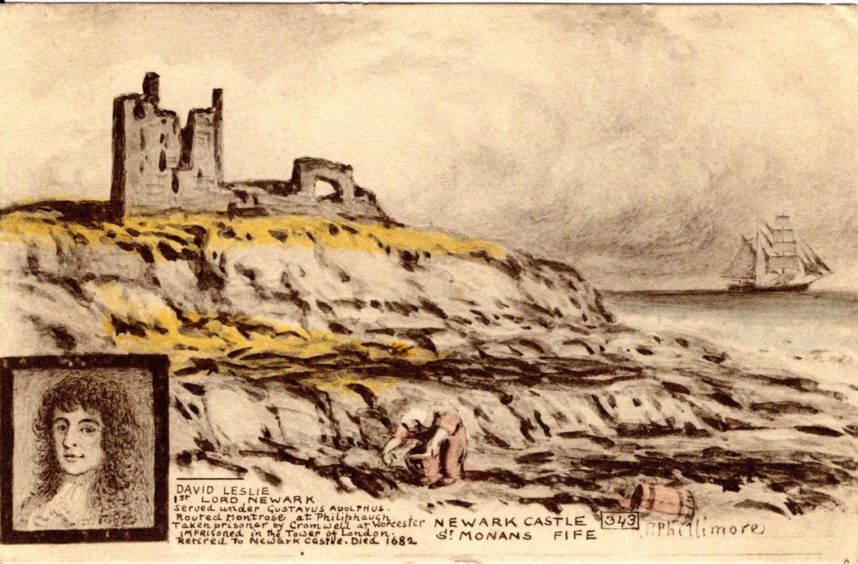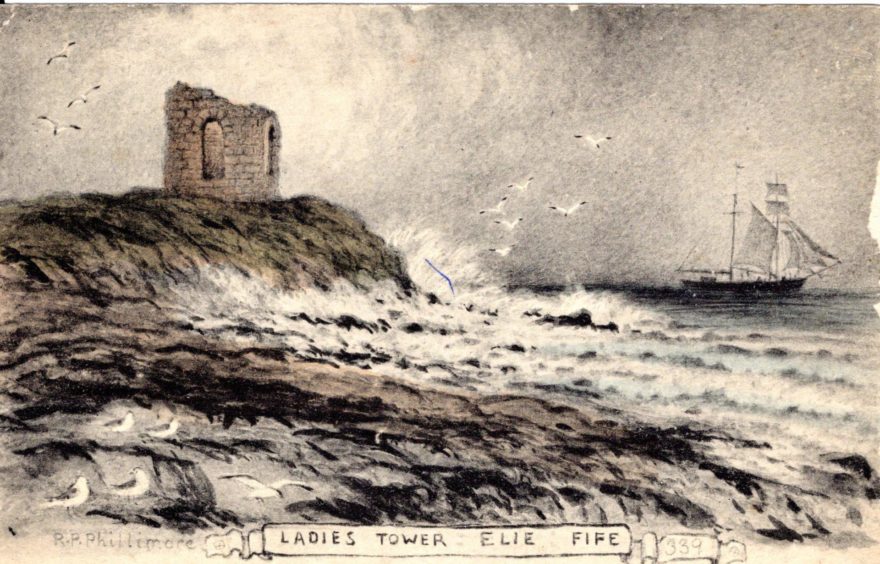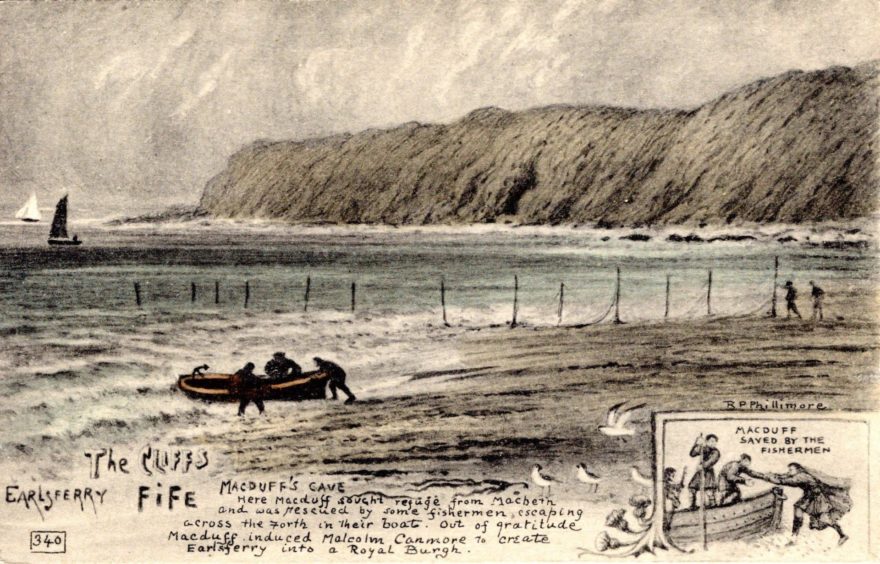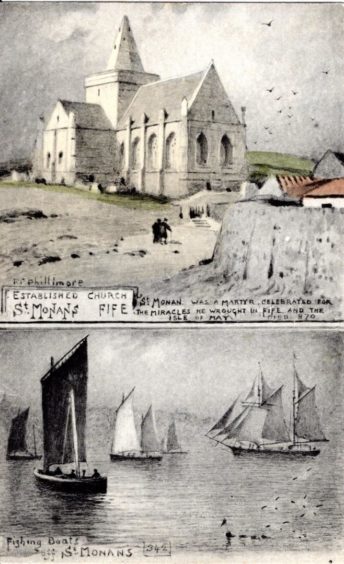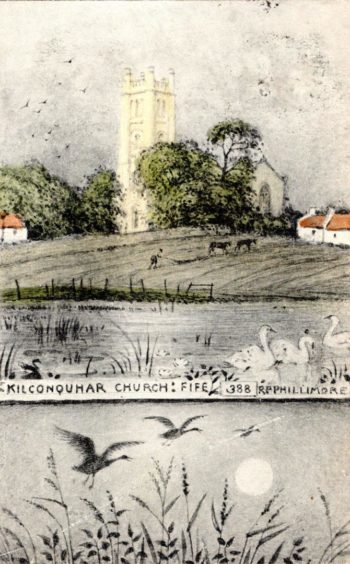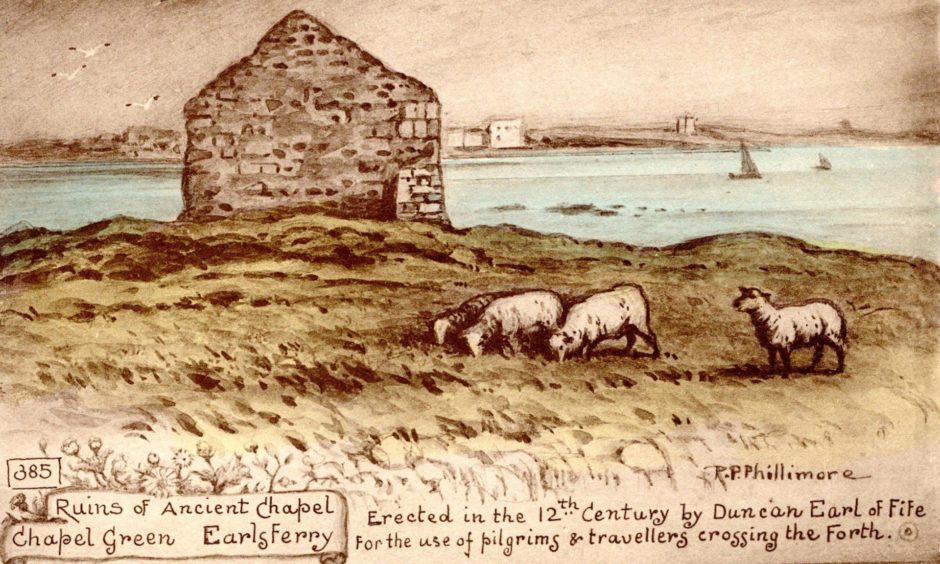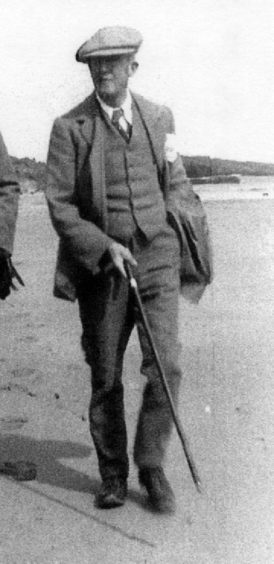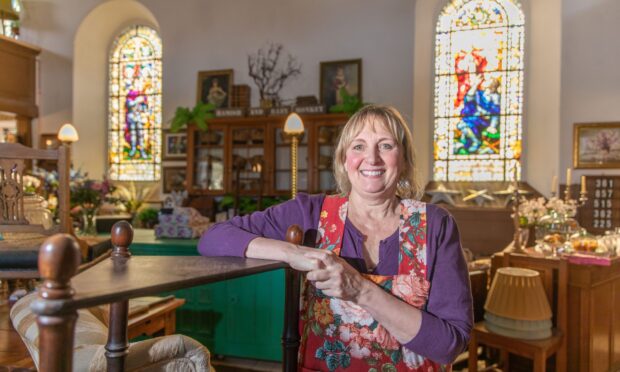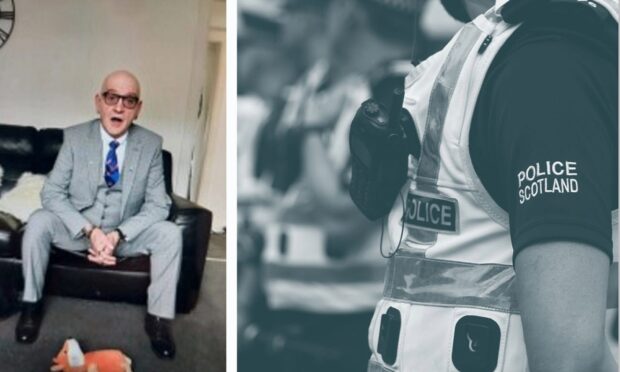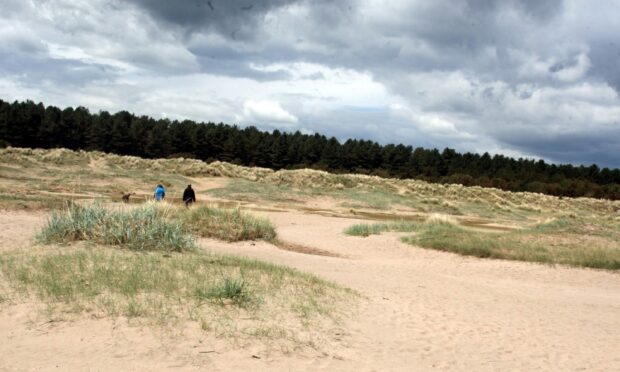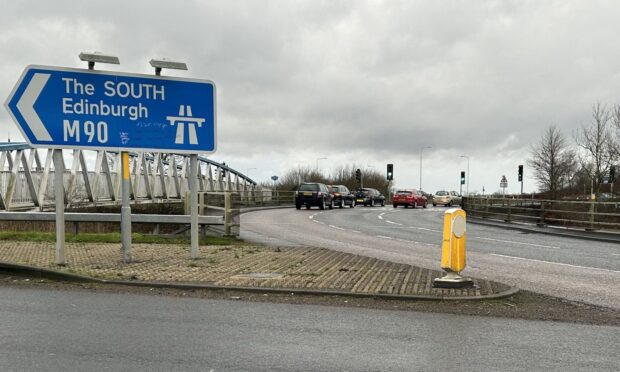Michael Alexander speaks to retired consultant rheumatologist Jan Bondeson about his fascination with the works of a 19th century postcard artist who created various images of landmarks in the East Neuk of Fife.
When Swedish-born physician Jan Bondeson retired as a lecturer and consultant rheumatologist at the Cardiff University School of Medicine a few years ago, it gave him more time to indulge in his hobby of collecting books, art and postcards.
He’s been collecting postcards for 15 years and now has an impressive haul of 20,000 plus around 8000 books.
Now based in Dunbar, however, the 58-year-old has developed a particular interest in the work of 19th century postcard artist Reginald Phillimore – including works he created of several landmarks in Fife.
Phillimore’s postcard drawings included the cliffs at Earlsferry; the ancient chapel, Earlsferry; Lady’s Tower, Elie; Parish church, St Monans; Newark Castle, St Monans and Parish church, Kilconquhar.
“Reginald Phillimore was born in 1855, one of five children of Dr William Phillimore, the superintendent of a lunatic asylum near Nottingham,” explains Jan.
“He showed promise as an artist already as a schoolboy, winning a government art prize for the painting of a still life group in watercolour, from nature.
“After a third-class Oxford B.A. in history, he worked as an assistant schoolmaster for many years.
“A shy, retiring man, he very much disliked the boisterous pupils and their unseemly shenanigans, and wished to be free of his humdrum day job to concentrate on his art, but he could not make a living with pen and brush.
“The turning point came when three capitalist aunts of his, who had taught school in North Berwick, East Lothian, all died in 1900 and 1901, leaving their house, school, properties and money to Reginald.”
Jan explained that despite Reginald acquiring the inheritance, he did not want to live in idleness. Besides, there was a need to accumulate money and provide for his old age.
At an early stage after he had come to North Berwick, he began to produce picture postcards from his own drawings.
The start of the picture postcard boom in Britain coincided with Phillimore’s move to North Berwick, and the quaint East Lothian surroundings inspired him to become a full-time postcard artist.
He employed a teenage North Berwick schoolgirl, Mary Pearson, to do the delicate colouring.
Since she liked some variation, no two hand-coloured cards are the same.
“Most of Reginald Phillimore’s early, unnumbered picture postcards were conventional in that they depicted a standard view, like the Bass Rock or Tantallon Castle, with brief explanatory text,” explains Jan.
“From the very beginning, they enjoyed good sales locally, since people appreciated that they were of superior aesthetic quality.
“As he grew more experienced, Reginald invented a style of his own for his picture postcards: there was still a main motive, but often several smaller vignettes as well, and brief explanatory text describing the history of the building, close or street depicted.
“This proved a both novel and felicitous manner to produce a postcard, and Reginald’s business flourished as a result.
“He sold his postcards for a halfpenny each to a network of dealers, initially mainly in the Lothians, but with time all over Britain.
“Between 1904 and 1914, he was one of Britain’s postcard kingpins, admired and collected by many, and easily able to make a living for himself.”
Phillimore is best known for his many felicitous postcards depicting various parts of Edinburgh, a city he knew very well, and his numerous cards with East Lothian motives.
He travelled widely in the Scottish lowlands, however, and more than once travelled through Fife.
In Earlsferry, he painted the cliffs where Macduff had once sought refuge, and the ancient chapel in Chapel Green.
In nearby Elie, he painted the seaside Lady’s Tower that Lady Janet Anstruther used as her bathing-house. Before taking to the waves, she sent a servant into Elie ringing a bell, for the locals to stay well away.
In St Monans, he painted the parish church, which is still standing today, and the ruins of Newark Castle.
In Kilconquhar, he painted the tall and impressive parish church, which is also still standing today.
“The Great War came, with its depressing influence on commerce in general and the postcard industry in particular,” adds Jan.
“When hostilities ended in 1918, Reginald Phillimore was 63 years old, but it was not yet time to retire.
“Since the market for his picture postcards had largely disappeared, he had to conduct an orderly retreat for his postcard company, which once had enjoyed such meteoric success.
“He sold the occasional painting and etching, but the influx of money was nothing like it had been in pre-war times.
“The market for his postcards continued to decline. Town after town on the English mainland was lost, and shop after shop stopped stocking his cards since they were no longer fashionable.
“Yet he remained well represented in Scotland throughout the 1920s, particularly in his Edinburgh and East Lothian strongholds.”
Reginald Phillimore’s health, both mental and physical, had always been very good, but in 1936, he suffered a serious stroke, becoming paralysed in the right side of his body and experiencing an impairment of his speech.
He seemed to be close to death, but his iron constitution allowed him to rally, although he had become crippled for life.
On sunny days, the loyal Mary Pearson wheeled him about in an invalid chair, and he liked to sit in the small garden to the rear of his house.
He died on Christmas Eve 1941 and was buried in the family vault at Bridgnorth.
During his 15 years of collecting postcards, Jan has acquired a fair few of Phillimore’s works and now has around half of his entire 650-strong rare and sought after collection.
He has very seldom paid more than £100 for any postcard – the most for a Phillimore probably £60 or so. Last week he got a Gullane card for £34.
Jan has also written two books about him – Phillimore’s Edinburgh, published in 2018, and Phillimore’s East Lothian, published earlier this year.
“The greatest Phillimore collector in the world is Mr Donald Deaks who lives in Hertfordshire,” says Jan.
“He has helped me with my books and helped me with the scans of the cards. Without him there wouldn’t have been any books.”
Jan contacted The Courier about Phillimore’s Fife works, however, simply because he thought readers might be interested.
He also believes that in this digital world, postcards of old have taken on new significance.
He was interested when a postcard fancier from Dundee gave a talk about old Dundee postcards made by Valentines at the Lothian Postcard Club of which he is a member.
“Today postcards are considered backward and old fashioned but back in Edwardian times postcards they were extremely fashionable,” he says.
“In Edwardian times Phillimore could support himself quite easily merely through his postcards.
“He was one of Britain’s postcard kingpins you could say and his postcards were bought and collected by many people.
“He was a superior artist. I collect art as well. I believe I have a certain eye for an artist and Phillimore definitely had what it takes.
“Phillimore did a fair bit of travelling. He was all over Scotland except for the Highlands. All over the Scottish lowlands, and he liked ruins and historical monuments.
“That’s why he did ruined castles. He loved churches as well. He did several in Fife. Many of his cards are of Edinburgh. He did about 90 and more than 100 from East Lothian.
“Some of his East Lothian and Edinburgh images are of incredible high quality.”
Jan, who attended medical school at Lund University, Sweden, and qualified in 1988, was awarded several scholarships to continue his scientific career at the renowned Kennedy Institute of Rheumatology in London.
He became a pioneer of the experimental use of adenoviral gene transfer to study intracellular signalling, and investigate the regulation of important cytokines and matrix metalloproteinases.
In 2000, he was promoted to become senior lecturer and consultant rheumatologist at Cardiff University, doing a mixture of clinical work, teaching and research.
Here, his research concentrated on the role of synovial macrophages in osteoarthritis. He had more than 100 publications in refereed scientific journals.
He has however, also written several non-fiction books on various topics such as medical anomalies and unsolved murders.
He’s always had a profound interest in history, especially the history of medicine, and a “bit of a fancy for the macabre and odd.”
Bondeson is the biographer of a predecessor of Jack the Ripper called the London Monster who stabbed 50 women in the buttocks; of Edward ‘the Boy’ Jones who stalked Queen Victoria and stole her underwear, and Greyfriar’s Bobby, the Scottish terrier, who supposedly spent 14 years guarding his master’s grave in Edinburgh.
Jan’s most recently released book is called the Murder Houses of Edinburgh.
